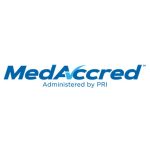When faced with a potential recall, a company will encounter several challenges, especially during the internal deliberation process. Assembling a team that can both prepare for and execute on making the recall decision involves ensuring that each member understands his or her role, drawing on specific skills and knowledge.
“I think it is easy for people to get together in a room and have very strong opinions about something that is outside of their area of particular expertise,” says Anthony Blank, cofounder and senior advisor at Barton & Blank LLC. For example, the regulatory team member might express opinions about the clinical risk and how a potential recall situation affects a patient population, while the medical expert states opinions on the regulatory requirements associated with this scenario. Although a feedback exchange is typical, the team assembled to assess a potential recall situation should stick to their respective fields of expertise to ensure that the most well informed decisions are made. “Having well defined roles and responsibilities is key to success, and not having such can pose significant challenges and lead to inconsistent decision making,” says Blank.
The core team that will be making the final recall decision would ideally include, at minimum, representatives from quality, regulatory and medical.
Quality: Responsible for communicating the source of the issue, whether it’s from a trend, complaint, or a specific event or series of events in the field. “I look to quality to articulate why something has been escalated and what the events are that have been escalated,” says Blank, adding that this responsibility can extend to operations, depending on the company. “I expect quality or operations, or a collaboration between the two, to give me a fairly good assessment of how many products are affected and how broadly and to whom they are distributed around the world.” For products not yet in distribution, information about their status and whether they have been put into quarantine should be provided.
Regulatory: Responsible for providing information about the regional regulatory requirements in which the product is distributed. Blank advises that companies have access to regulatory experts from these regions, because criteria are different in each country.
Medical: Responsible for evaluating and driving assessment of the hazard, both realized and theoretical, to patients and product users as it relates to the event.
Sales and Marketing: Not essential to the core team, but responsible for providing field action execution timelines related to retrieving product. Sales and marketing should also be able to provide an updated customer list that will be receiving notification of the recall.
Engineering and R&D: Not essential to the core team, but can play an important role in root cause analysis, and providing information about device failure and the likely causes.
Once the team is built, a company should take the following steps:
- Establish roles and responsibilities, and clearly define the decision-making hierarchy.
Each member should understand his or her role, and the hierarchy should establish who is responsible for making the final decision. It is important to have a single point person or committee that is empowered to make the call based on the advice of the team. - Establish well-defined procedures and processes.
Identify the expectations of the participants involved and put together the processes and procedures for making assessments and decisions. - Evaluate the worst-case scenario of conducting a field action.
This will help a company ensure that proper training and supportive processes and procedures are in place before a field action is taken. “Trying to figure it out on the fly is not very smart, because that’s when you make mistakes, which can lead to unwarranted and unnecessary problems for both the company and patients if you end up doing a poor job of identifying where the products are distributed, and if you don’t do a good job of retrieving the products, that could hurt someone,” warns Blank.
The worst-case scenario should involve defining all factors involved in executing the field action, from identifying who has the products and the process for communicating with those parties, to what the company will do when it receives the returned product. Companies must also give FDA the opportunity to witness destruction of the returned products.
In addition to building a qualified team that can evaluate and direct the implementation of a recall, it’s important for companies to reach out to FDA when they have questions. Representatives from the agency and industry stakeholders will be discussing the health hazard evaluation (HHE) process and issues surrounding the recall process at the HHE, Risk Assessment, & Recalls Conference in Washington, DC on May 12-13. Anthony Blank will moderate a panel discussion involving the internal deliberations and processes that a company must have in place before a product recall.
Related Stories
Device Manufacturers Still Grapple with Recall Risks and Next Steps





